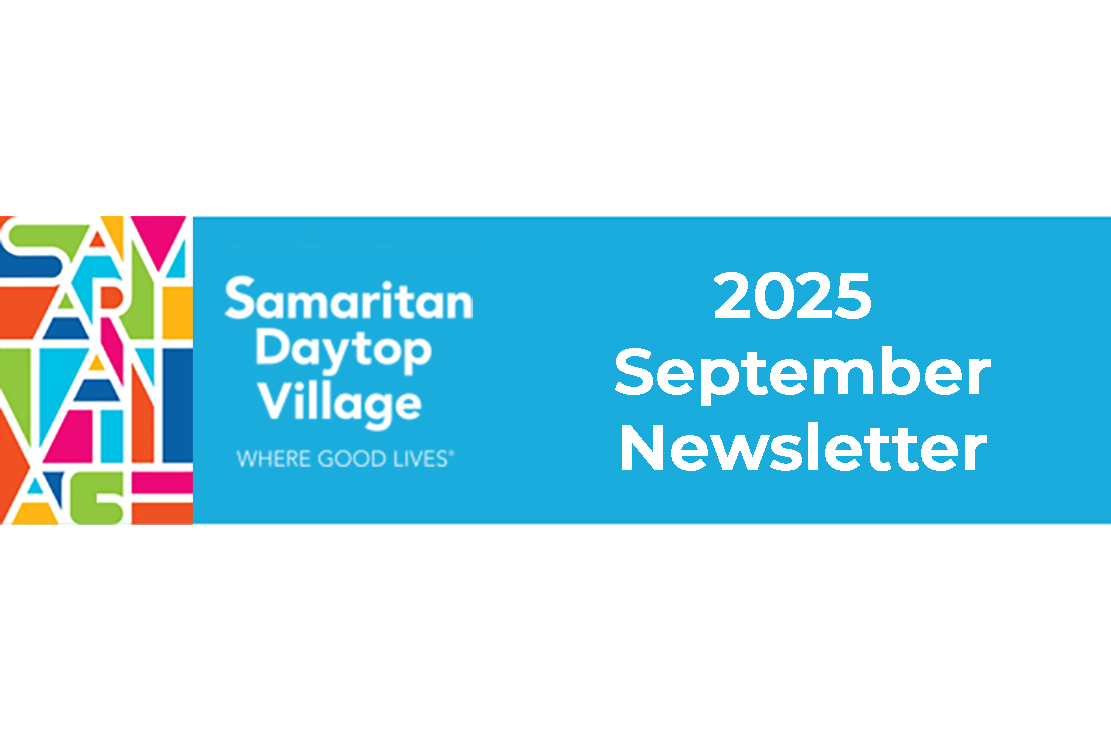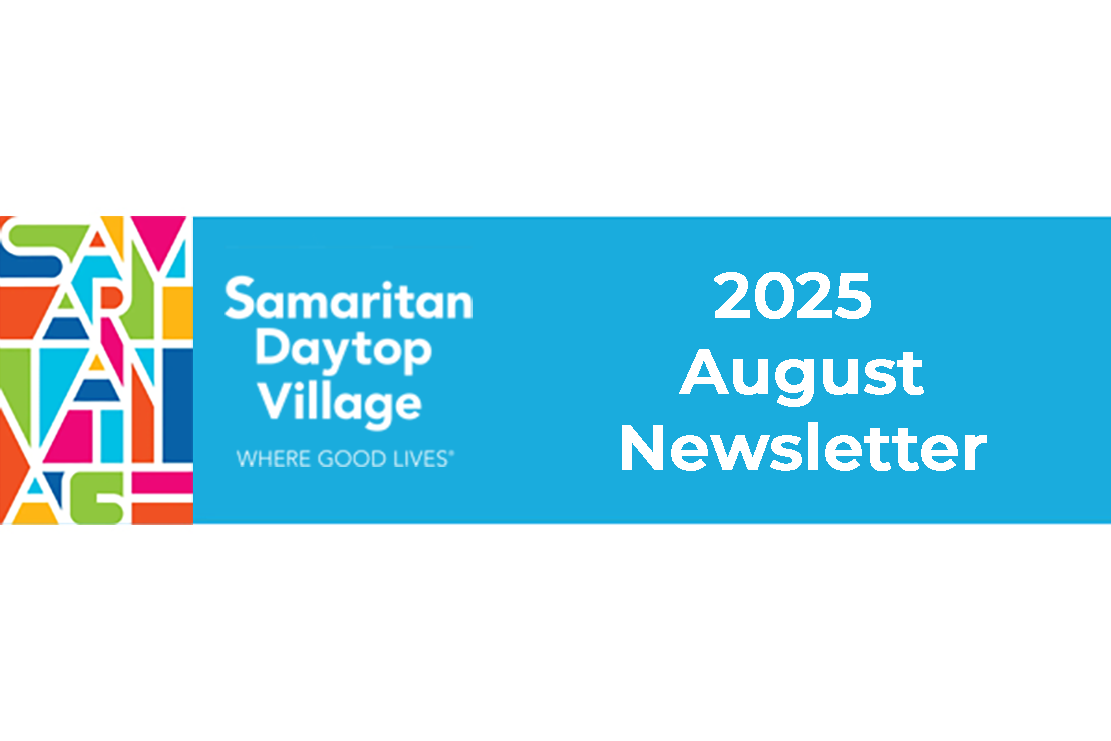Enhancing Recovery and Pioneering Hope: Integrating Outpatient and Residential Treatment Amid the Opioid Crisis

By:
Carolann Slattery, EdD, LCSW-R, VP of Outpatient Services
James Hollywood, LCSW, VP of Residential and Recovery Services
As published in Behavioral Health News, Fall 2023 Edition
Link to article: https://behavioralhealthnews.org/bhn-fall-2023-issue/
The battle against addiction is a pressing concern, as communities across the United States grapple with the devastating impact of the opioid crisis. In response, the New York State (NYS) government has taken a pioneering step forward by introducing Comprehensive Integrated Outpatient Treatment Programs (CIOTPs), an innovative approach that combines the strengths of outpatient and opioid treatment programs. This visionary initiative merges services from the two to create a seamless continuum of care. The integrated model marks a significant step in the fight against opioid addiction by offering a more holistic, personalized, and effective path to recovery.
Substance use and mental health disorders are pervasive issues that affect millions of individuals worldwide. Fortunately, the field of addiction and mental health treatment has evolved significantly, offering a range of effective interventions to support individuals on their path to recovery. Among them are two prominent modes of treatment – outpatient and residential programs. Each modality has its own strengths and limitations. However, a groundbreaking approach in NYS forges a comprehensive integration between the two program types, harnessing the benefits of both to provide a more holistic and effective recovery journey.
The new developments in outpatient services increase the patient’s access to Medication for Opioid Use Disorder (MOUD). Over the past five years, these changes have provided opportunities to strengthen and advance residential treatment.
NYS Office of Addiction Services and Supports (OASAS) created Residential Redesign, a set of new regulations and funding mechanisms to permit the establishment of integrated care in residential treatment settings. The Part 820 series of mental health laws provided the framework to incorporate addiction medicine, psychiatry, and health services while increase the staffing of licensed nurses, social workers, and mental health counselors. The additional staffing supported the work of CASAC counselors, recovery coaches, and program management to build a supportive environment for recovery to take root and grow.
Addressing the Opioid Epidemic with Innovation
The opioid epidemic has ravaged communities, cutting across demographic lines, and left countless lives in its wake. Recognizing the urgency of the crisis, NYS has embarked on a mission to reshape addiction treatment through Comprehensive Integrated Outpatient Treatment Programs. This innovative approach acknowledges the multifaceted nature of opioid addiction and offers a more comprehensive solution.
The Essence of Comprehensive Integration
Understanding Comprehensive Integrated Outpatient Treatment Programs
CIOTPs combine the principles of outpatient treatment and opioid treatment programs to create a powerful synergy for recovery.
While outpatient treatment provides flexibility and accessibility, opioid treatment programs offer specialized interventions, particularly for individuals struggling with opioid use disorder (OUD). Through this integration, individuals receive personalized, evidence-based care, tailored to their needs, regardless of the severity of their addiction.
A Perfect Fit for Complimentary Services – CIOTP & Residential Redesign
As a result of the national health care reform taking shape across the country, OASAS intended Residential Redesign as a way to implement the new developments. A hallmark of the Part 820 regulations for residential treatment was person-centered, trauma-informed care that uses evidence-based assessments and treatments and focuses on client outcome and satisfaction.
Both the 820-licensed residential programs and CIOTPs had aligned philosophies, practices, and missions. Partnering residential with outpatient programs was a logical next step. Clients would benefit from a network of care better suited to meet their personal treatment needs. The partnership would create a pathway for clients to receive a higher level of specialized care and, most importantly, gain access to methadone.
It is necessary to understand that addiction medicine specialists at licensed 820 residential programs cannot prescribe or dispense methadone to treat opioid addiction. Methadone can only be dispensed in an Opioid Treatment Program (OTP) or from a CIOTP licensed to provide methadone to residential treatment clients.
The clinical teams in the CIOTP and residential program work together to monitor the client’s progress during residential treatment, adjust interventions as needed, and coordinate the client’s return to the community. Discharge planning is more effective when the treatment team involved throughout the residential stay continues to work with the client transitioning into the CIOTP.
Key Features of CIOTPS
- Personalized Treatment Plans: CIOTPs offer tailored treatment plans that cater to individual needs. Whether an individual requires medication-assisted treatment, counseling, or a combination of both, the program ensures an approach that resonates with the client’s unique journey.
- Flexibility and Continuity: CIOTPs embrace their flexibility. Individuals can access treatment to maintain daily routines, responsibilities, and connections. This continuity is essential for long-term recovery.
- Medication-Assisted Treatment (MAT): CIOTPs incorporate MAT, combining evidence-based medications like methadone, buprenorphine, or naltrexone with counseling and therapy. MAT not only reduces withdrawal symptoms and cravings but also addresses the physiological aspects of addiction.
- Holistic Approach: By merging outpatient treatment’s focus on psychological and social aspects with opioid treatment’s medical interventions, CIOTPs address the holistic needs of individuals battling OUD.
- Comprehensive Support: CIOTPs offer comprehensive support services, including counseling, therapy, medical care, social services, and peer support groups. This comprehensive approach tackles addiction from various angles, enhancing the chances of successful recovery.
- Community Integration: CIOTPs foster connections with local communities and resources, enabling individuals to build a strong support network outside of the treatment setting. This integration is vital for sustained recovery.
Benefits of CIOTPs
- Reduced Stigma: By integrating opioid treatment with outpatient programs, CIOTPs help reduce the stigma associated with MAT. This normalization encourages more individuals to seek help without fear of judgment.
- Improved Accessibility: CIOTPs enhance treatment accessibility because clients receive specialized care without the constraints of residential stays. This is particularly advantageous for individuals who may have work, family, or other commitments.
- Higher Retention Rates: The flexible and less restrictive nature of CIOTPs often leads to higher retention rates. Individuals are more likely to engage in treatment when it aligns with their daily lives.
- Long-Term Success: CIOTPs focus on sustained recovery by equipping the individual with the tools and support needed to manage triggers, prevent relapse, and achieve long-term success in the recovery journey.
Understanding Outpatient and Residential Programs
Outpatient Programs: Outpatient treatment programs offer individuals the flexibility to attend therapy sessions and receive treatment while continuing with their daily lives. This approach is ideal for those with less severe substance use or mental health disorders, as well as individuals with strong support systems at home.
Residential Programs: Residential or inpatient treatment programs provide a structured and immersive environment for individuals to focus solely on their recovery. With 24/7 support and a tightly knit community, residential programs are better suited for individuals with severe addiction or mental health issues, inadequate home environments, or a history of unsuccessful outpatient treatment attempts.
The Power of Integration: Residential and Outpatient Programs
The concept of integrating outpatient and residential treatment programs involves a seamless transition between the two levels of care. Integration is not just about a smooth handover from one program to another; it is about the creation of a cohesive and continuous journey that optimizes the strengths of both approaches.
- Gradual Progression: By integrating outpatient and residential programs, individuals can experience a gradual step-down approach. The gradual progression ensures a smoother transition from the highly structured residential environment to the more flexible outpatient setting. The measured pace reduces the likelihood of relapse, as individuals are continuously supported while adapting to increased independence.
- Personalized Continuum of Care: Every individual’s journey through recovery is unique. Integrating both types of programs allow for a personalized continuum of care. Treatment plans can be tailored to an individual’s changing needs, ensuring they receive the right level of support at the right time.
- Consistency in Therapeutic Relationships: A key advantage of comprehensive integration is the continuity of therapeutic relationships. As they transition, clients can maintain connections with the same therapists and peers they have come to know and trust. This consistency bolsters the therapeutic alliance and contributes to better treatment outcomes.
- Skill Consolidation: Residential programs often provide intensive skill-building and coping strategies. Integration with outpatient care ensures that individuals can practice and consolidate these skills in real-life situations. The practice helps them apply what they have learned in a supportive yet less controlled environment.
- Relapse Prevention: One of the primary objectives of any treatment program is to prevent relapse. Integrating outpatient and residential care enhances relapse prevention efforts. The integration allows individuals to navigate triggers and challenges in both supervised and unsupervised settings, while still receiving professional support.
Challenges of Implementation
While the benefits of comprehensive integration are substantial, its implementation is not without challenges. Coordination between different treatment teams, maintaining consistent communication, and addressing insurance and logistical issues are crucial aspects requiring careful consideration. Building a successful integration must involve reviewing and amending workflows, cross-training staff (on the two program models), and modifying the electronic health record to share information between the programs.
Key Components of CIOTPs:
- Personalized Treatment Pathways: Everyone’s journey through recovery is unique, and CIOTPs recognize this diversity. CIOTPs create treatment plans that factor in a client’s medical history, substance use patterns, psychological well-being, and social context.
- Access to MAT: MAT, including medications like methadone, buprenorphine, and naltrexone, is a cornerstone of CIOTPs. These medications mitigate withdrawal symptoms, reduce cravings, and pave the way for a more stable recovery.
- Psychosocial Support: Addressing the psychological and emotional aspects of addiction is integral to CIOTPs. Therapies, counseling, and support groups provide the necessary tools for coping, healing, and personal growth.
- Community Integration: CIOTPs foster connections between individuals and their local communities, empowering them to build a support network that extends beyond the treatment setting.
- Continuity of Care: The integration between outpatient and opioid treatment programs ensures a seamless transition, maintaining a consistent level of care and support throughout the recovery journey.
Advantages of CIOTPs:
- Holistic Healing: By combining medical interventions, psychological support, and social connections, CIOTPs address the complex needs of individuals, resulting in holistic healing and long-term well-being.
- Reduced Stigma: Integrating MAT within the comprehensive framework helps combat the stigma often associated with medication-based approaches, encouraging more individuals to seek help.
- Higher Engagement and Retention: The flexibility and inclusiveness of CIOTPs contribute to higher engagement and retention rates, fostering a sense of empowerment and commitment to recovery.
- Long-Term Recovery Focus: CIOTPs place a premium on sustained recovery. By equipping individuals with skills, resources, and support, these programs enable them to navigate challenges and embrace a life beyond addiction.
Disadvantages of CIOTPs
While NYS CIOTPs offer a promising approach to address the opioid crisis, it is important to acknowledge that no system is without its challenges. Here are some potential disadvantages associated with CIOTPs:
- Limited Accessibility: CIOTPs might not be easily accessible to all individuals due to geographical constraints, transportation issues, or the lack of CIOTP facilities in certain areas. These issues could result in uneven access to comprehensive treatment, leaving some individuals (and communities) underserved.
- Resource Allocation: Implementing CIOTPs requires financial resources, trained staff, and infrastructure. In resource-strapped areas, the availability and quality of CIOTPs might be compromised, impacting the overall effectiveness of the approach.
- Complexity of Coordination: Coordinating care between different treatment providers, counselors, therapists, and medical professionals can be challenging. Coordination that is not seamless might lead to gaps in care and miscommunication, and ultimately affect the treatment outcome.
- Cultural Sensitivity: CIOTPs need to be culturally sensitive to cater to diverse populations. If the programs do not consider cultural differences, language barriers, or unique community needs, they might not effectively engage and retain participants from various backgrounds.
- Stigma Associated with Methadone: While methadone is an evidence-based medication for OUD, there still exists a stigma associated with its use. Some individuals might avoid CIOTPs that incorporate methadone due to fears of judgment or concerns about dependency on the medication.
- Potential for Discontinuity: The transition from the structured environment of residential treatment to the outpatient setting might pose challenges for some individuals. The potential for discontinuity in care could lead to relapse if individuals are not adequately prepared for the shift.
- Resistance to Medication: Not all individuals with OUD respond positively to MAT like methadone. Some might experience adverse effects or find MAT to be an ineffective option for managing their cravings and withdrawal symptoms.
- Reduced Focus on Abstinence: CIOTPs prioritize harm reduction and stabilization over strict abstinence. While this approach is rooted in compassion, it might not resonate with individuals who are committed to achieving complete sobriety and fear that the program might not align with their goals.
- Reliance on Patient Compliance: CIOTPs rely on patient compliance and engagement. If individuals do not actively participate in counseling or therapy, or consistently follow their treatment plans, they might not achieve the desired outcomes.
- Potential for External Influences: CIOTPs transition individuals into their home environments sooner. This exposes them to potential triggers and negative influences that might hinder their recovery process.
Conclusion
While NYS CIOTPs offer a forward-looking approach to addressing the opioid crisis, it is important to recognize and manage the potential disadvantages and challenges of this treatment model. By acknowledging potential drawbacks of CIOTPs, policymakers and healthcare professionals can work to mitigate them, maximize benefits, and minimize any negative impacts. Top of Form
Comprehensive integration between outpatient and residential treatment programs marks a significant step forward in the realm of addiction and mental health recovery. By combining the strengths of both approaches, individuals can experience a more gradual, personalized, and effective journey toward sustainable healing.
By integrating outpatient and opioid treatment, NYS is redefining addiction treatment. The focus on individualized care is lighting the way to a brighter future for those affected by opioid addiction. In fact, CIOTPs are proving to be a transformative pathway to recovery. The new program type recognizes the complexity of addiction and the resilience of the human spirit.
As the field of treatment continues to evolve, embracing the integrated approach of CIOTPs has the potential to revolutionize how we approach recovery, offering clients newfound hope and optimism on the path to lasting wellness.
Resources
Centers for Disease Control and Prevention (CDC), National Center for Health Statistics, National Vital Statistics System, Mortality 1999-2020 on CDC WONDER Online Database, released in 2021. Data are from the Multiple Cause of Death Files, 1999-2020, as compiled from data provided by the 57 vital statistics jurisdictions through the Vital Statistics Cooperative Program, accessed July 11, 2022, at http://wonder.cdc.gov/mcd-icd10.html.
CDC, Fentanyl Facts, available at https://www.cdc.gov/stopoverdose/fentanyl/index.html.
CDC, Provisional Drug Overdose Death Counts, available at https://www.cdc.gov/nchs/nvss/vsrr/drug-overdose-data.htm, accessed September 21, 2022, for additional information on this topic.
The Changing Opioid Crisis: development, challenges, and opportunities Nora D. Volkow, M.D.1, Carlos Blanco, M.D. Ph.D.1 1 National Institute on Drug Abuse, Bethesda, MD 20892Mol Psychiatry. 2021 January ; 26(1): 218–233. doi:10.1038/s41380-020-0661-4.
New York State Office of Addiction Services and Supports (OASAS), Comprehensive Integrated Outpatient Treatment Programs, 3/25/2022 OASAS Project No. SUPP1008 Office of Addiction Services and Supports (ny.gov).
Nusslock, Robin, Institute for Policy Research, The Opioid Crisis: An ‘Epidemic Within the Pandemic, June 28, 2021
U.S. Department of Health & Human Services (HHS), Determination that a Public Health Emergency Exists, October 16, 2017, available at https://www.phe.gov/emergency/news/healthactions/phe/Pages/opioids.aspx For the purposes of this report, drug overdose deaths as reported by the CDC do not include alcohol-related fatalities
Volkow ND, Blanco C. The changing opioid crisis: development, challenges, and opportunities. Molecular Psychiatry. 2021 Jan;26(1):218-233. doi: 10.1038/s41380-020-0661-4. Epub 2020 Feb 4. PMID: 32020048; PMCID: PMC7398847.


